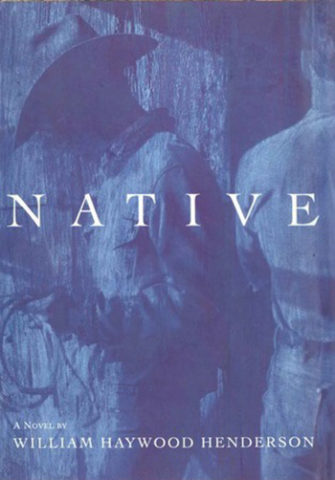 Native
Native
by William Haywood Henderson
Published by Dutton
Published March 1, 1993
Fiction
256 pgs. • Find on Amazon.com
Reviewed by Stephen O. Murray
Jun 17, 2003
The paperback edition of William Haywood Henderson’s novel Native, originally published in 1993, comes laden with blurbs, including quite extravagant ones from Edmund White and Tom Spanbauer.
The latter is especially remarkable since Native covers some topical and geographical ground similar to his own masterpiece, The Man Who Fell in Love with the Moon: the little-populated “west” of Wyoming, Montana, and Idaho; violent homophobia; yearning same-sex love by those without gay identities or access to any gay communities or even models; and the debasement of the Native American roles labeled “berdache” (relexified by those pushing spurious etymology to “two-spirit”).
Native begins promisingly with Blue Parker, foreman of a ranch in the Wind River Mountains country of Wyoming. Blue is in his early twenties, has the respect of the small town in which he grew up, and a modicum of loyalty from the cowboys he manages. He has no woman, but neither do some of the cowboys who live with each other in unquestioned camaraderie. Derek, a young alcoholic, does have a woman (this sort of locution and the view it reflects of owning and using females for sex and domestic service is the local view) but is enraged by any indication that other males might love and/or desire males. Derek prefigures those who crucified Matthew Shepard half a decade later, after recognizing “queerness” in another Wyoming bar.
Derek is outraged by Gilbert, a flamboyantly gay Native American’s and his “shameless” flirtation with the men in the local bar. Derek nearly kills the slight (like Matthew Shepard) ranch-hand Sam for dancing with Gilbert and is outraged that Blue will not lie about what happened to keep Derek at large. Derek intuits that Blue wanted to get it on with Sam himself and believes that in keeping Sam on after Sam gets out of the hospital, Blue must be having a sexual relationship with Sam. More violent confrontations follow, though what is supposed to be happening in the present, what is memory, and what is fantasy (and for whom) gets increasingly murky as the book seems to me to implode. (My guess is that Henderson spent too much time wallowing in Absalom, Absalom at Stanford, though there is no direct evidence for this surmise.)
The original conflict is well set-up and set out. I find Blue’s character hard to believe, and Gilbert seems there as a representative of some lost Nature more than a human character. Sam and Derek are believable, and the irrational hatred Derek exhibits is all too familiar in fag bashers, intermontane and other. Blue’s loss of position in the community, job, house, and friends is also too credible. Sam gets some backstory (and the game as well as the name), although in providing this and Gilbert’s, Henderson’s shifts of perspectives are quite inept and not clearly marked.
Even more than The Man Who Fell in Love with the Moon, it seems that the hallucinatory effects Henderson was trying to achieve are those of Jim Grimsley’s Dreamboy (set in the South rather than the West but also laden with homophobic violence and not completely clear about what happens).
On the difficulties of men loving men and being allowed to live in the macho culture of Wyoming and the active complicity of local law enforcement in violence against those who so deviate, Native is a turgid mess in contrast to Annie Proulx’s tersely understated and heartbreaking story “Brokeback Mountain,” included in her collection Close Range. Henderson churns up poetic prose about the landscape and show the high cost of any deviations from heteronormativity; alas, his first novel is unnecessarily murky and under motivated.
first published by epinions, 17 June 2003
©2003, 2017, Stephen O. Murray

